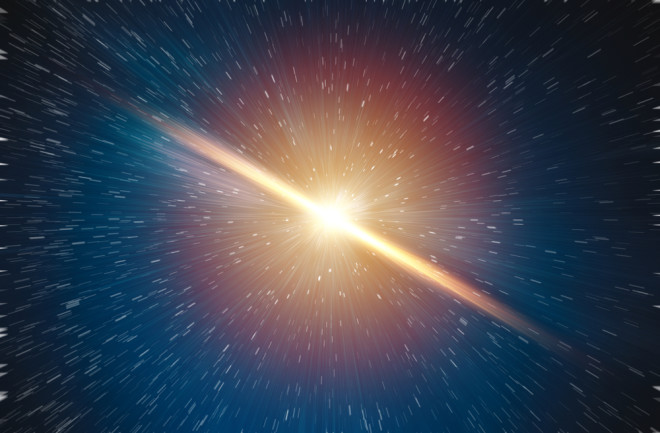The realization that our universe is expanding is one of the most transformative discoveries in cosmology. While once hotly debated, this observational reality now forms the bedrock for our modern conceptions of the cosmos.
The first evidence for an expanding universe came through Albert Einstein’s discovery of the general theory of relativity in 1917. Other scientists have since gathered more evidence, and expanded his ideas into more tangible models.
Einstein's Expanding Universe
Einstein’s theory of relativity offered a serious upgrade to our understanding of space, time, motion and gravity. And as soon as he developed his theory, he applied it to the entire universe.
Much to his surprise, it naturally predicted an evolving, dynamic universe, one that was either expanding or contracting.
But this idea went against the best thinking of the time, which emphasized that our universe was perfectly static throughout eternity. In response, Einstein modified his equations to keep it static and went on with his life.
How Do We Know the Universe Is Expanding?
A few years after Einstein made that change, the astronomer Edwin Hubble made a remarkable discovery, one that led to the first major piece of evidence that we live in an expanding universe.
Red Shifting Galaxies
Hubble found that the light from most distant galaxies was, on average, shifted to longer wavelengths, giving those galaxies a reddish hue. Upon collecting data from many galaxies, this pattern was clear.
He also found that the amount of red-shifting was proportional to the distance to the galaxy from our own Milky Way. Galaxies twice as far away had twice the redshift, while galaxies 10 times farther had 10 times the redshift, and so on.
Doppler Effect
One possibility for this redshift is that the galaxies are physically moving, and that something like the Doppler effect (the shifting in tone that happens to moving sounds) could explain the results.
But that would lead to a massive and very unusual cosmological conspiracy. It also did not adequately show why galaxies twice as far away move at twice the speed. A simple Doppler effect can’t explain all the data.
Read More: January 1, 1925: The Day We Discovered the Universe
Back to Einstein’s Hypothesis
Alternatively, research has considered whether the light from distant galaxies gets scattered or loses energy (and changes in hue) as it travels through intergalactic depths.
Tired Light Hypothesis
Some referred to this as the “tired light” hypothesis, which fell out of favor under scrutiny. Essentially, if it existed, we should be able to measure this effect within galaxies, and that has not been the case.
That takes us back to Einstein’s original insight.
Expanding Universe
In an expanding universe, the space between galaxies continually grows, and this expansion causes light to stretch to longer wavelengths. The more space there is between us and a distant galaxy, the more stretch can happen as the light travels, and the greater the redshift.
Are Galaxies Moving Away From Us?
In an expanding universe, every galaxy recedes away from every other galaxy (on average, of course, as there can still be small-scale collisions between nearby galaxies).
So those of us on Earth don’t occupy a privileged or special position.
From our perspective, every galaxy appears to be receding away from us. And, in theory, the perspective from each other galaxy is similar: All the others are moving away, as the entire universe is getting bigger.
Read More: The Universe's Expansion Could End Surprisingly Soon, Say Cosmologists
More Answers in the Cosmic Microwave
We have other ways to indirectly test the expansion of the universe. One of those is to ask what the universe was like in the past when it was smaller, then go out with observations and see if our hypothesis is correct.
Cosmic Microwave Background
The most important example of this line of thinking is the cosmic microwave background, or CMB. In the 1950’s, cosmologists realized that at some point billions of years ago our universe would be so small, hot and dense that all the matter in it would be in the state of a plasma.
Once it expanded and cooled off, the radiation from that plasma would still be hanging around today, but redshifted so much that it would only visible to microwave telescopes.
In 1964, as theoretical cosmologists were starting to put together an experiment to test this, two radio engineers at Bell Labs accidentally discovered this microwave background as they were calibrating a new antenna. In perhaps the greatest case of cosmological irony, the two engineers received the Nobel Prize for their accidental discovery, while the theorists who predicted the existence of the CMB won no prize.
Read More: How the New Science of Biocosmology Redefines Our Understanding of Life
